Visual Exploration of the Spatiotemporal Evolution Law of Overburden Failure and Mining-Induced Fractures: A Case Study of the Wangjialing Coal Mine in China
Abstract
:1. Introduction
2. Mine Conditions and Mining Techniques
3. Field Monitoring
3.1. Arrangement of Boreholes
3.2. Monitoring via Surface Borehole
3.2.1. Strata Movement and Fracture Propagation in Borehole #1 and #1’
3.2.2. Strata Movement and Fracture Propagation in Borehole #2
3.3. Underground Observation Borehole
3.4. Heights of Caved Zone and Fractured Zone
3.5. Ground Surface Subsidence
4. Discussion
4.1. Movement of Overburden Strata and Fracture Propagation
- (a)
- Initiation stage: This stage started when the working face was 100 m away from the borehole and ended when the working face was 20 m away from the borehole. This stage was characterized by cracks distributed on the ground surface, and fractures appeared on the loess layer and strata beneath it. The density and average size of these cracks increased as the working face moved forward. Surface deformation and local borehole wall exfoliation were observed. Additionally, axial and circular fractures were observed on near-surface strata, while deep strata were not significantly affected.
- (b)
- Active stage: This stage started when the working face was 20 m away from the borehole and ended when the working face was 120 m past the borehole. Propagation of fractures in the overburden strata and movement of the ground surface were significantly accelerated. Mining-induced fractures appeared in the coal and rock ahead of working face within a certain range. When the working face reached the borehole, step subsidence was observed, resulting in severe surface ground deformation. Large-sized fractures and local damages were observed in the bedrocks beneath the epipedon. Separation and dislocation of the overburden strata were observed after failures of the immediate roof and main roof, and mining-induced fractures propagated. The overburden movement, which was characterized by the movement of the key strata, was transferred upwards to the ground surface gradually.
- (c)
- Degradation stage: This stage started when the working face was 120 m past the borehole. During this stage, the movement of the overburdened strata degraded (there was a slow subsidence due to gravitation). The bed separation and fractures that had developed in the overburden strata were partially closed to compaction and the rate of surface deformation slowed down. Surface cracks and step subsidence were partially mitigated.
4.2. Distribution of Fractures in the Overburden Strata
5. Conclusions
- (1)
- Field observations showed that the overburden strata generally experienced the phases of roof caving, generation of fracture, bed separation, dislocations, fracture propagation, surface subsidence, closing of fractures. The entire mining process can be divided into the initiation stage, the active stage, and the degradation stage according to activities of the overburden strata and propagation of mining-induced fractures.
- (2)
- The advance affecting range and angle of the working face were 96.7 m and 71°, respectively. The caved zone height is 2.9–4.11 times of the mining height, and the length of fractured zone is 19.35–22.19 times of the mining height. The height range of three parts in fractured zone is 24–26, 40–45, 30–35 m. Significant fractures were observed in the bending zone. Step subsidence and cracks, which indicate severe damages, were observed on the ground surface above goaf.
- (3)
- The borehole television approach is an effective and rapid way to observe the dynamic morphology of boreholes and facilitate the investigation of temporal and spatial evolution of mining-induced fractures in overburden strata during the mining process. Nevertheless, application of this approach has been limited by several issues. For instance, the resolution of the obtained images may be significantly affected by air humidity in the underground borehole. When the air is very damp in the boreholes, the observed images are often blurred. Also, observation cannot be achieved in the presence of wall damage or horizontal dislocation of the borehole, which lead to collapse and blockage.
Acknowledgments
Author Contributions
Conflicts of Interest
References
- Qian, M.G.; Shi, P.W.; Xu, J.L. Mining Pressure and Strata Control; China University of Mining and Technology Press: Xuzhou, China, 2010; pp. 98–101. (In Chinese) [Google Scholar]
- Zhang, D.S.; Fan, G.W.; Ma, L.Q.; Wang, X.F. Aquifer protection during longwall mining of shallow coal seams: A case study in the Shendong Coalfield of China. Int. J. Coal Geol. 2011, 86, 190–196. [Google Scholar] [CrossRef]
- Ma, L.Q.; Du, X.; Wang, F.; Liang, J.M. Water-preserved mining technology for shallow buried coal seam in ecologically-vulnerable coal field: A case study in the Shendong coal field of China. Disaster Adv. 2013, 6, 268–278. [Google Scholar]
- Fan, G.W.; Zhang, D.S.; Zhai, D.Y.; Wang, X.F.; Lu, X. Laws and mechanisms of slope movement due to shallow buried coal seam mining underground gully. J. Coal Sci. Eng. 2009, 15, 346–350. [Google Scholar] [CrossRef]
- Lai, X.P.; Cai, M.F.; Xie, M.W. In situ monitoring and analysis of rock mass behavior prior to collapse of the main transport roadway in Linglong Gold Mine, China. Int. J. Rock Mech. Min. Sci. 2006, 43, 640–646. [Google Scholar] [CrossRef]
- Palchik, V. Localization of mining-induced horizontal fractures along rock layer interfaces inoverburden: Field measurements and prediction. Environ. Geol. 2005, 48, 68–80. [Google Scholar] [CrossRef]
- Palchik, V. Formation of fractured zones in overburden due to longwall mining. Environ. Geol. 2003, 44, 28–38. [Google Scholar]
- Palchik, V. Experimental investigation of apertures of mining-induced horizontal fractures. Int. J. Rock Mech. Min. 2010, 47, 502–508. [Google Scholar] [CrossRef]
- Zhang, S.T.; Liu, Y. A simple and efficient way to detect the mining induced water-conducting fractured zone in overlying strata. Energy Procedia 2012, 16, 70–75. [Google Scholar] [CrossRef]
- Yu, J.C.; Liu, Z.X.; Yue, J.H.; Liu, S.C. Development and prospect of geophysical technology in deep mining. Prog. Geophys. 2007, 22, 586–592. (In Chinese) [Google Scholar]
- Kang, H.P.; Lin, J. Geomechanical tests and their applications in rock anchorage design. In Proceedings of the 11th Congress of the International Society for Rock Mechanics, Lisbon, Portugal, 9–13 July 2007; pp. 303–305.
- Kang, H.P.; Si, L.P.; Su, B. Borehole observation methods in coal and rock mass and their applications. J. China Coal Soc. 2010, 35, 1949–1956. (In Chinese) [Google Scholar]
- Wang, C.Y.; Law, K.T. Review of borehole camera technology. Chin. J. Rock Mech. Eng. 2005, 24, 3440–3448. (In Chinese) [Google Scholar]
- Han, Z.Q.; Wang, C.Y.; Hu, S. Digital borehole camera technology and its applications in mining geology exploration. In Proceedings of the 24th International Mining Congress and Exhibition of Turkey, Antalya, Turkey, 14–17 April 2015; pp. 287–290.
- Han, Z.Q.; Wang, C.Y.; Liu, S.B.; Zhu, H.Y. Research on connectivity of deep ore-lodes of borehole based on digital borehole camera. Disaster Adv. 2013, 6, 41–46. [Google Scholar]
- Han, Z.Q.; Wang, C.Y.; Zhu, H.Y. Research on deep joints and lode extension based on digital borehole camera technology. Pol. Marit. Res. 2015, 22, 10–14. [Google Scholar] [CrossRef]
- Tan, Y.L.; Zhao, T.B.; Xiao, Y.X. In situ investigations of failure zone of floor strata in mining close distance coal seams. Int. J. Rock Mech. Min. 2010, 47, 865–870. [Google Scholar] [CrossRef]
- Tan, Y.L.; Ning, J.G.; Li, H.T. In situ explorations on zonal disintegration of roof strata in deep coalmines. Int. J. Rock Mech. Min. 2012, 49, 113–124. [Google Scholar] [CrossRef]
- Tan, Y.L.; Yu, F.H.; Chen, L. A new approach for predicting bedding separation of roof strata in underground coalmines. Int. J. Rock Mech. Min. 2013, 61, 183–188. [Google Scholar] [CrossRef]
- Xiong, Z.Q.; Wang, C.; Zhang, N.C.; Tao, G.M. A field investigation for overlying strata behavior study during protective seam longwall overmining. Arab. J. Geosci. 2015, 8, 7797–7809. [Google Scholar] [CrossRef]
- Zhang, Y.J.; Liu, Z.G.; Guo, D. Study on simulation and monitoring of overburden failure height of multifull-mechanized caving mining. In Proceedings of the International Conference on Mine Hazards Prevention and Control, Qingdao, China, 15–17 October 2010; pp. 548–559.
- Gao, B.B.; Wang, X.L.; Zhu, M.L. Dynamic development characteristics of overburden strata ”two-zones” under conditions of compound roof, highly gassy and thick coal seam in full-mechanized top coal caving faces. Chin. J. Rock Mech. Eng. 2012, 31, 3444–3451. (In Chinese) [Google Scholar]
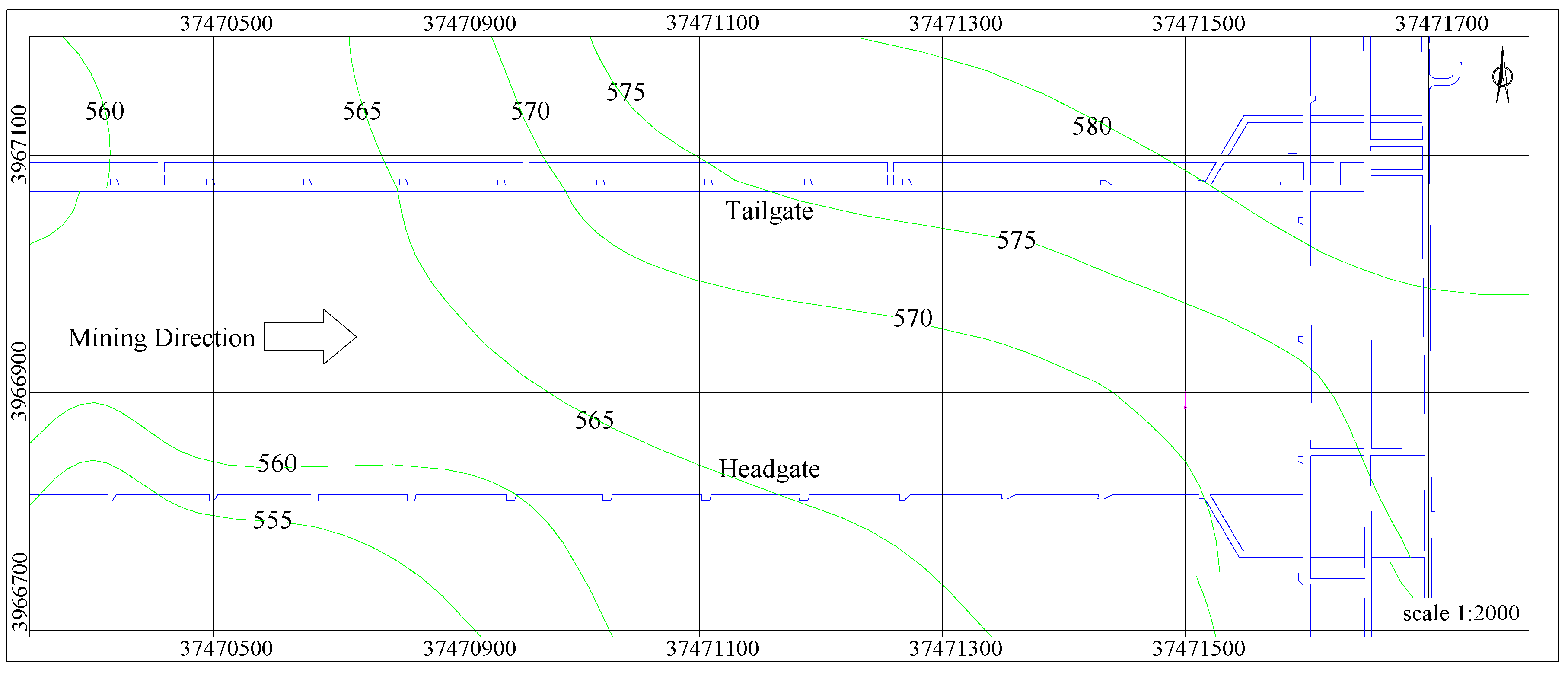

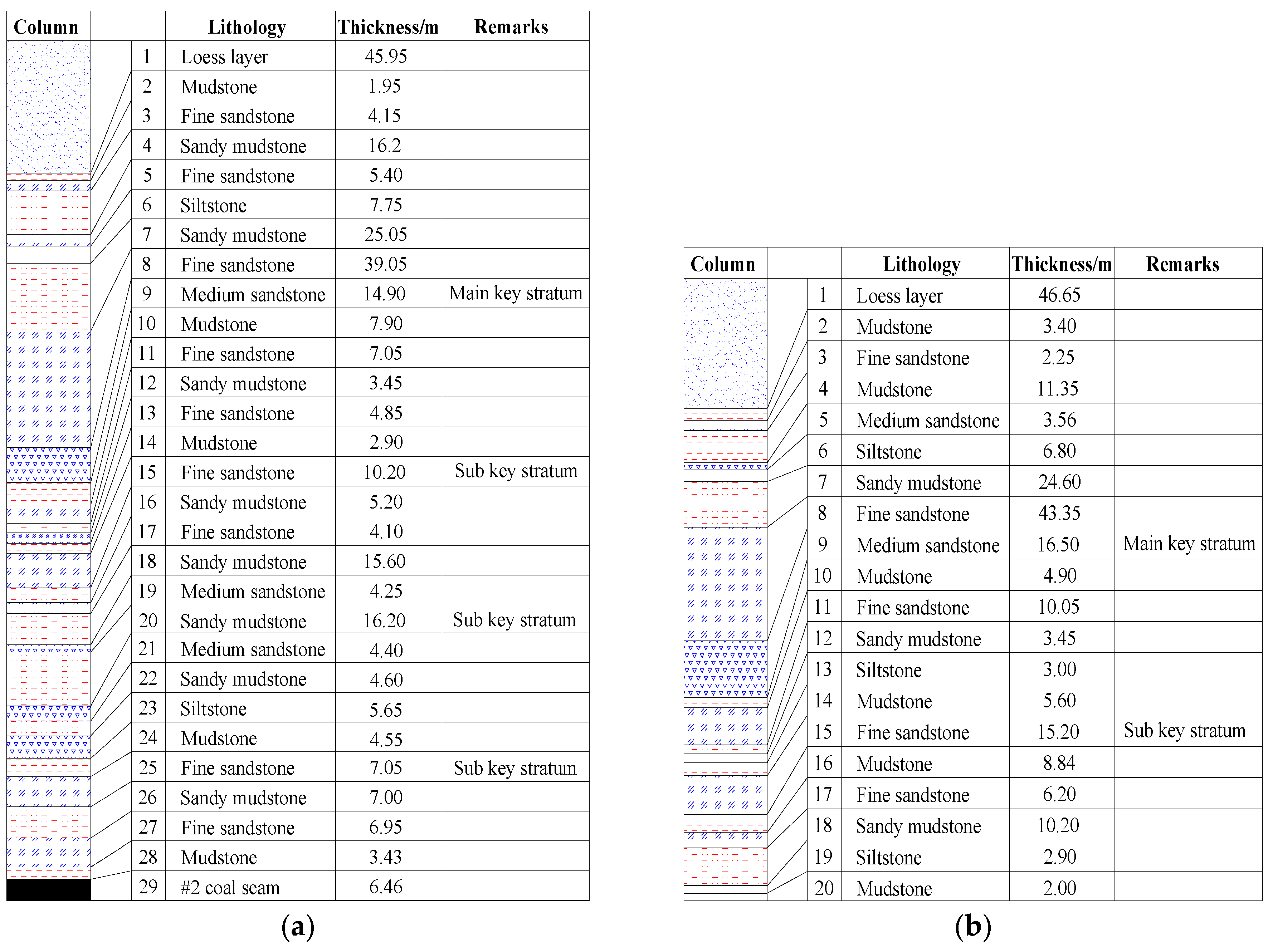
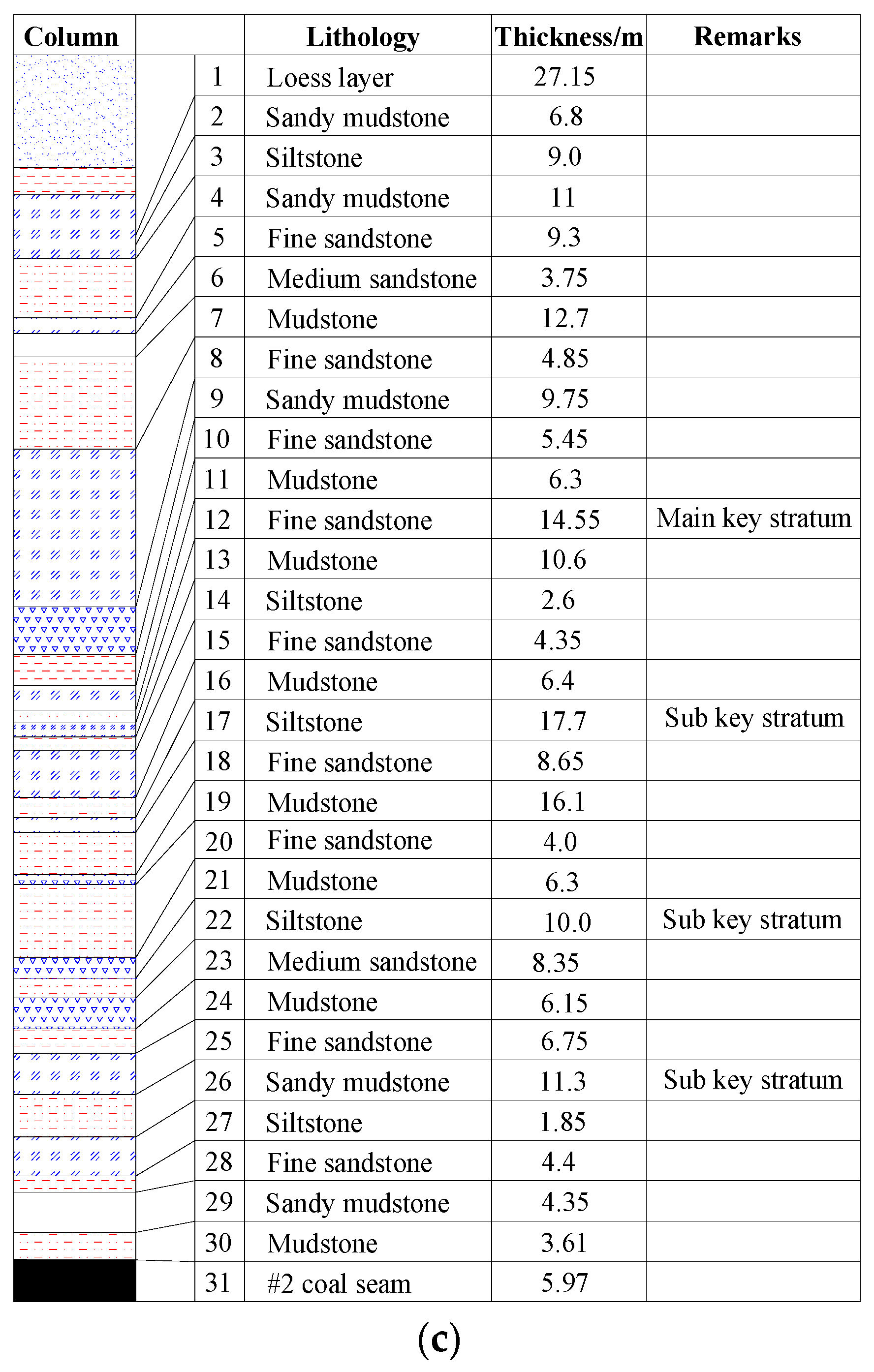
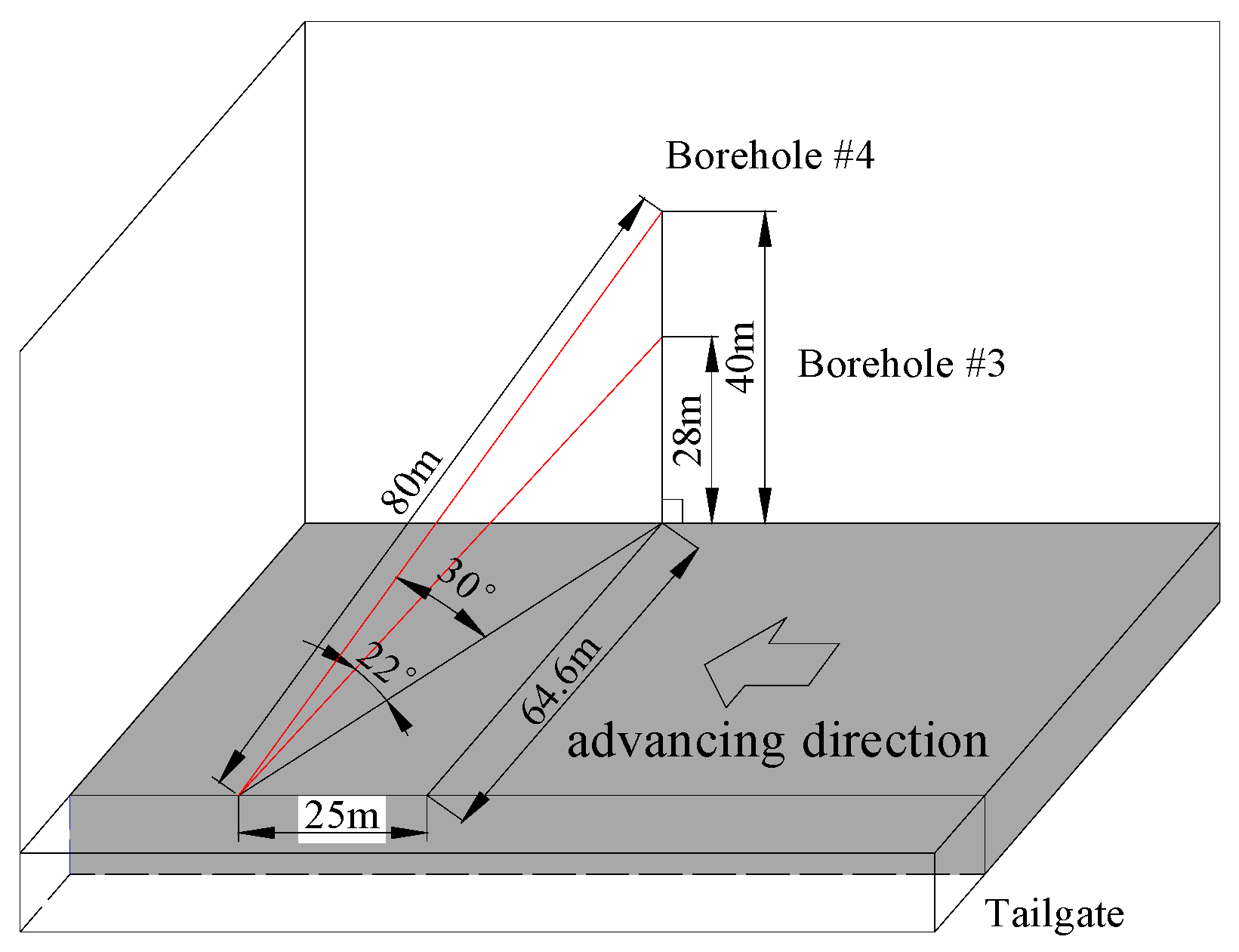





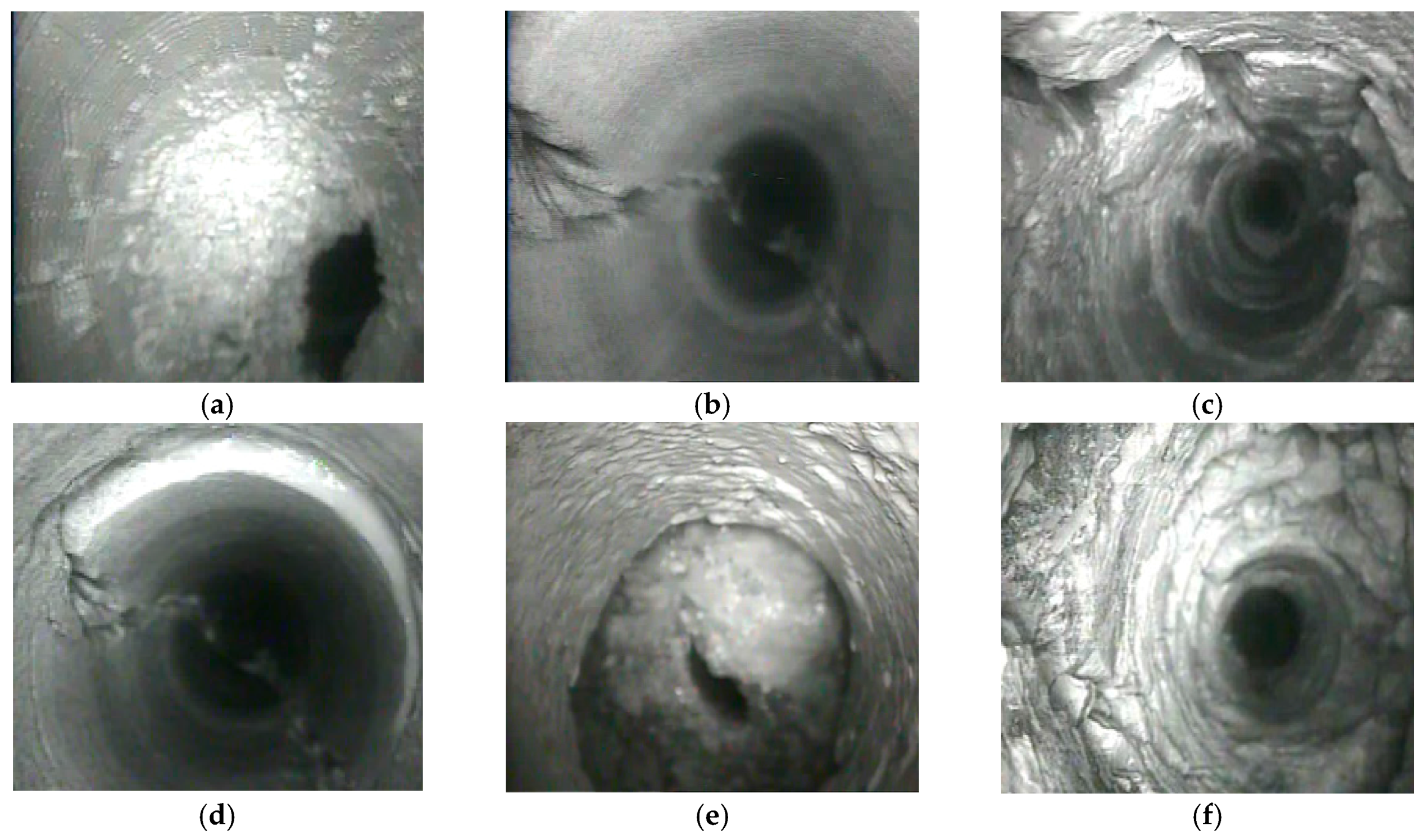


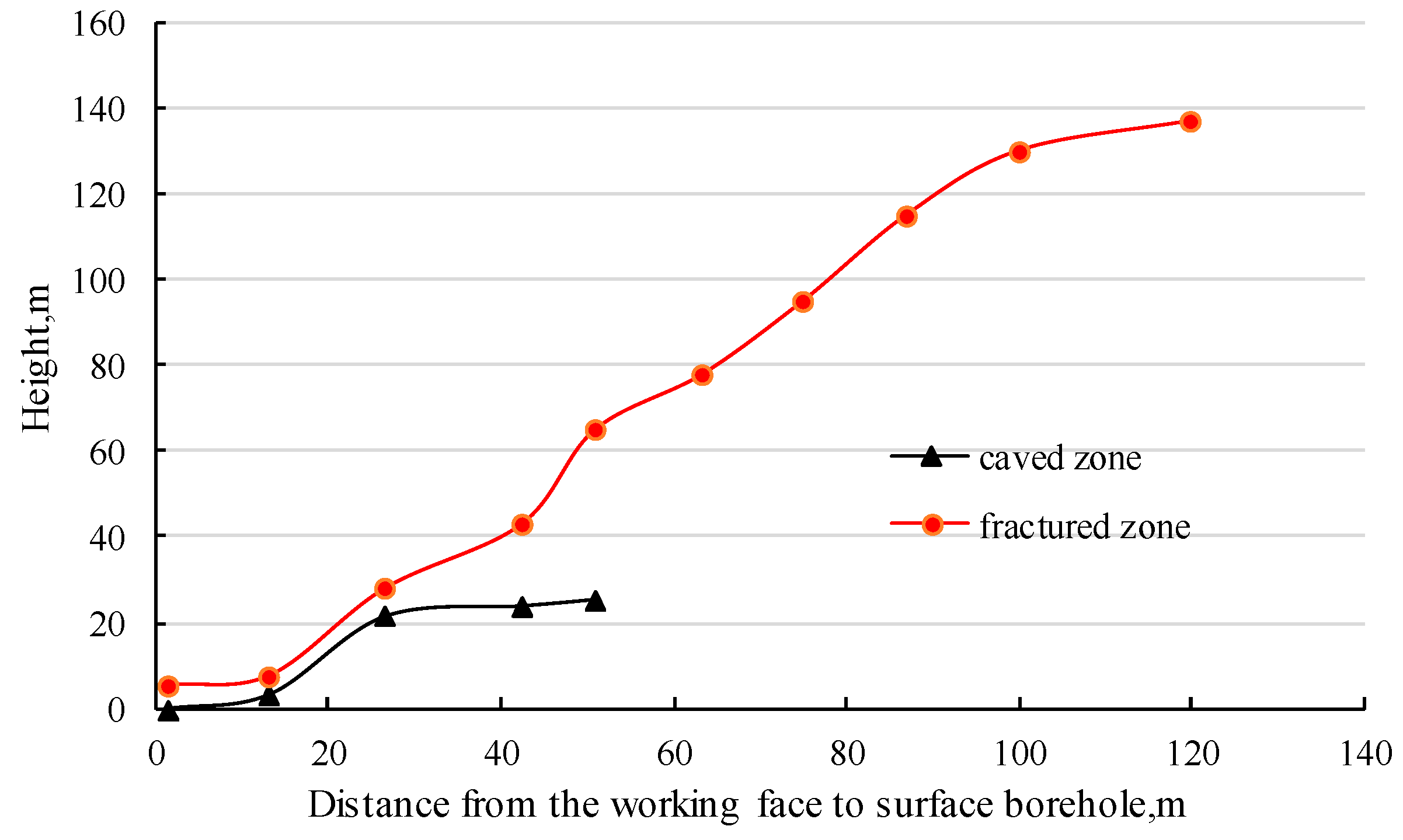

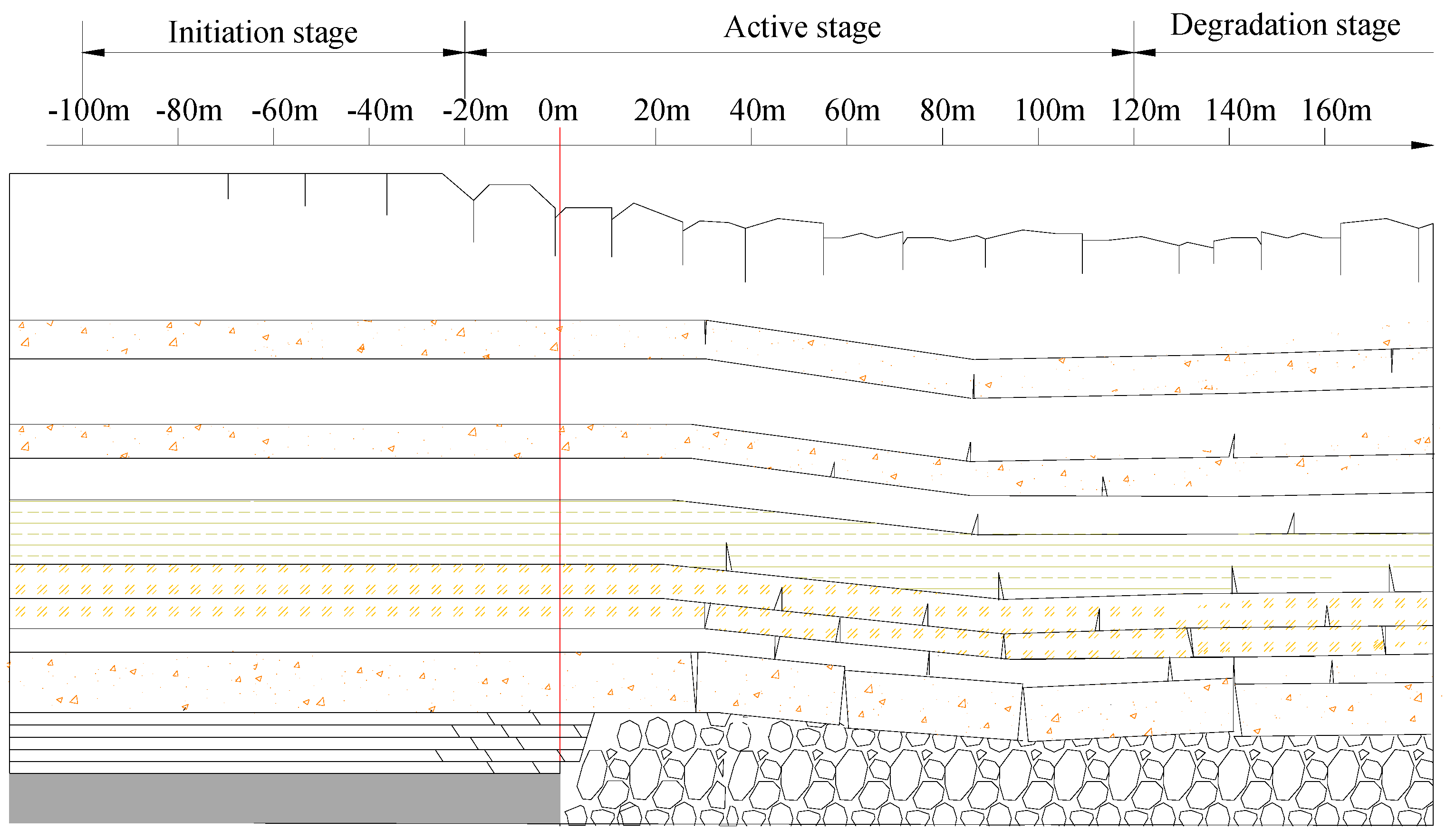

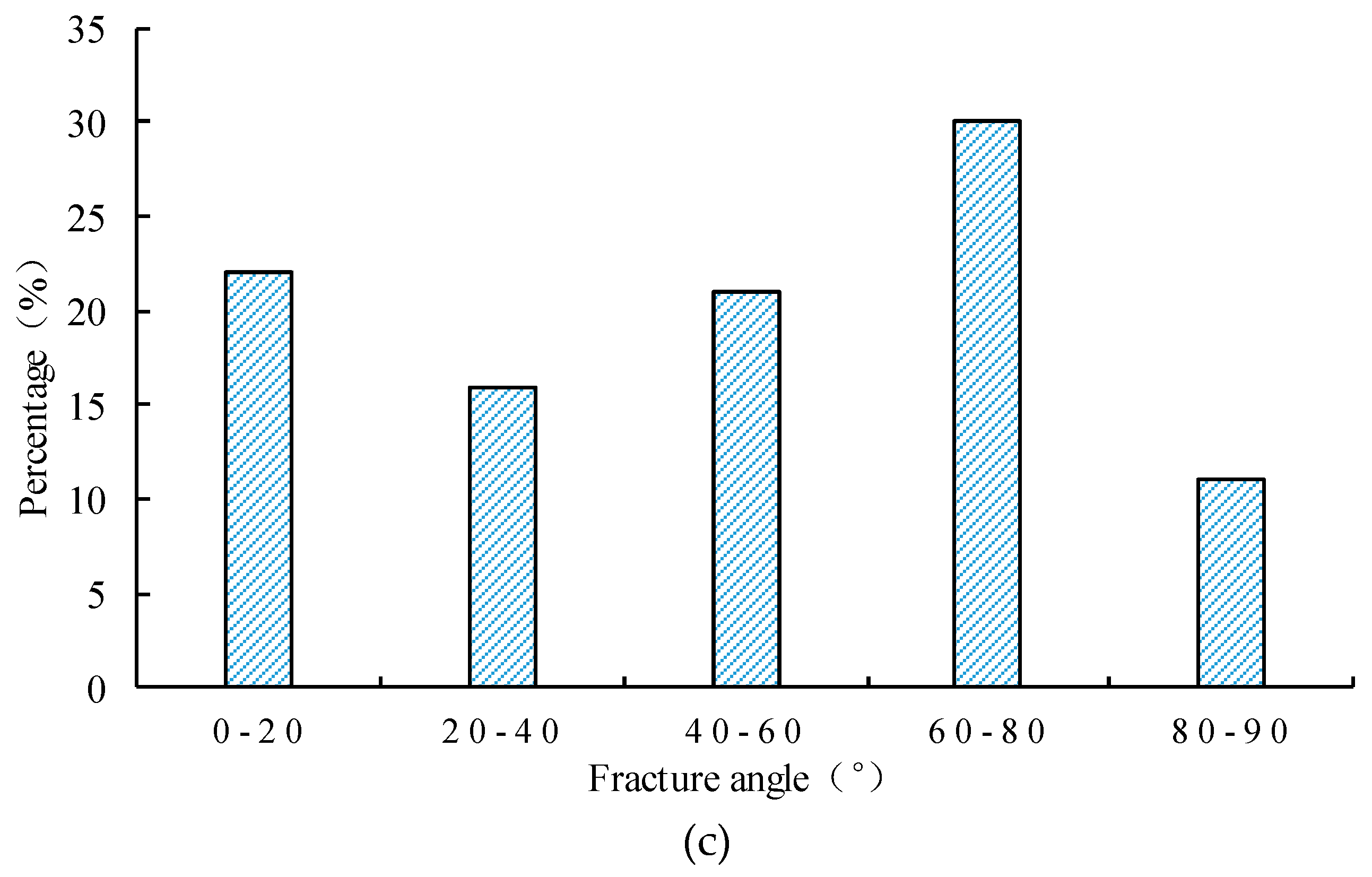
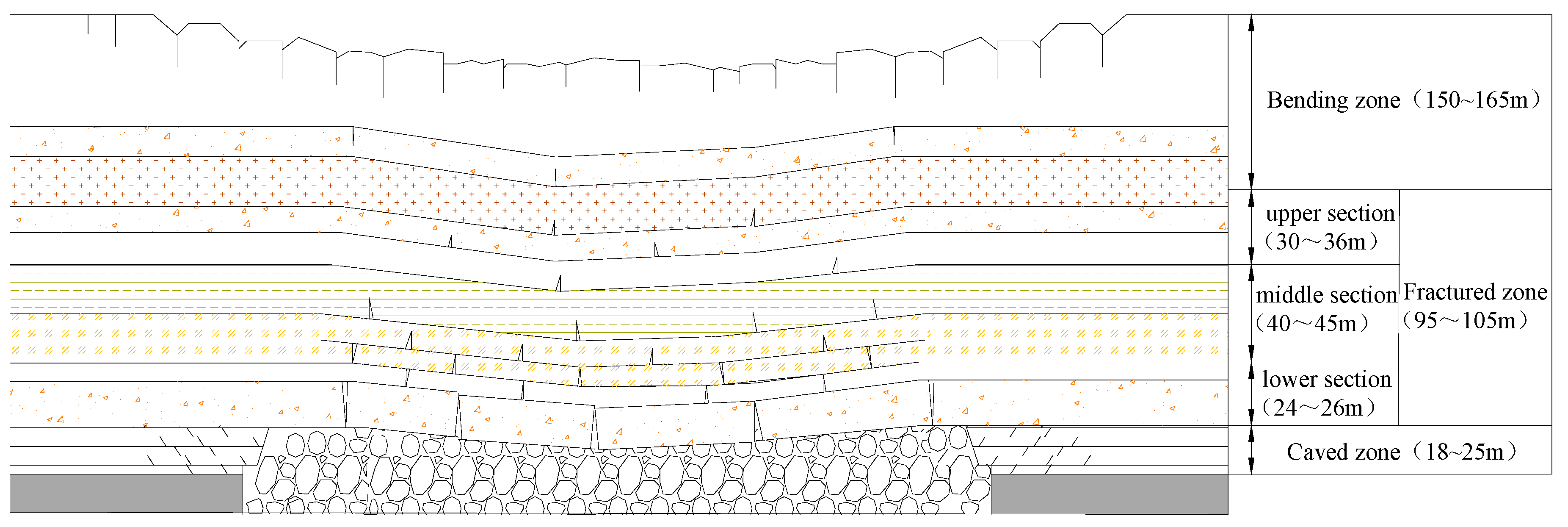
| Zone | Borehole #1 | Borehole #1’ | Borehole #2 | Borehole #3 | Borehole #4 | |||||
|---|---|---|---|---|---|---|---|---|---|---|
| Height/m | Ratio to Mining Height | Height/m | Ratio to Mining Height | Height/m | Ratio to Mining Height | Height/m | Ratio to Mining Height | Height/m | Ratio to Mining Height | |
| Caved zone | 21.6 | 3.48 | - | - | 25.5 | 4.11 | 18.5 | 2.98 | 18.0 | 2.90 |
| Fractured zone | 125.3 | 20.21 | 120 | 19.35 | 137.6 | 22.19 | - | - | - | - |
© 2017 by the authors. Licensee MDPI, Basel, Switzerland. This article is an open access article distributed under the terms and conditions of the Creative Commons Attribution (CC BY) license ( http://creativecommons.org/licenses/by/4.0/).
Share and Cite
Wang, H.; Zhang, D.; Wang, X.; Zhang, W. Visual Exploration of the Spatiotemporal Evolution Law of Overburden Failure and Mining-Induced Fractures: A Case Study of the Wangjialing Coal Mine in China. Minerals 2017, 7, 35. https://doi.org/10.3390/min7030035
Wang H, Zhang D, Wang X, Zhang W. Visual Exploration of the Spatiotemporal Evolution Law of Overburden Failure and Mining-Induced Fractures: A Case Study of the Wangjialing Coal Mine in China. Minerals. 2017; 7(3):35. https://doi.org/10.3390/min7030035
Chicago/Turabian StyleWang, Hongzhi, Dongsheng Zhang, Xufeng Wang, and Wei Zhang. 2017. "Visual Exploration of the Spatiotemporal Evolution Law of Overburden Failure and Mining-Induced Fractures: A Case Study of the Wangjialing Coal Mine in China" Minerals 7, no. 3: 35. https://doi.org/10.3390/min7030035






